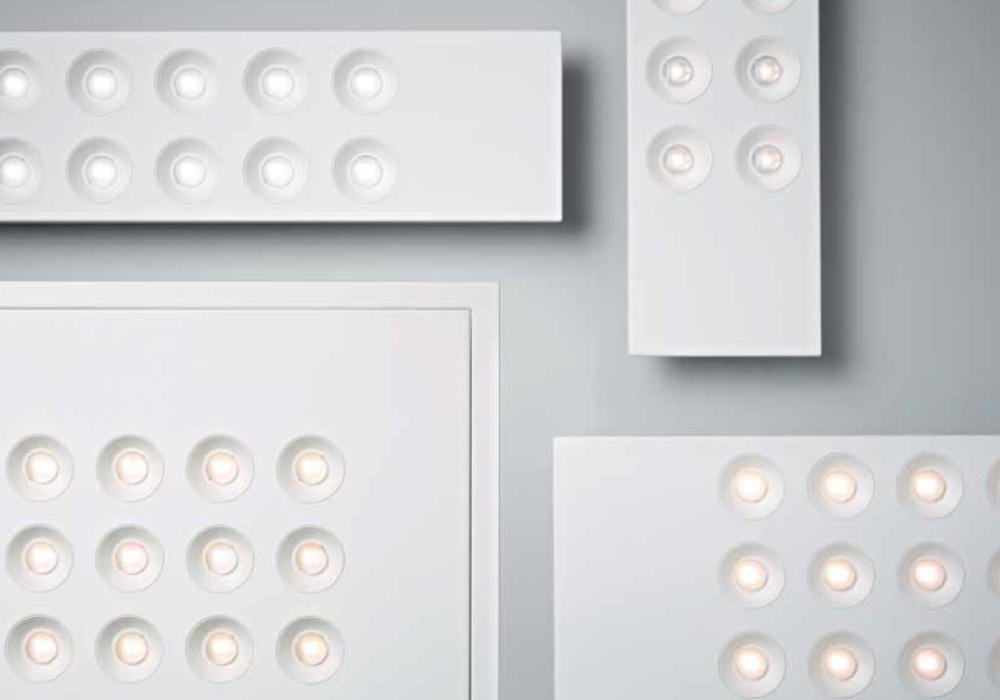How much light is left after 5 years?
(article from ETAP’s Lightpoint Magazine 2014 edition)
A correctly calculated maintenance factor is critical to the accurate measuring of a lighting installation. A maintenance factor that does not take sufficient account of the specific properties of LEDs, leads to inaccurate lighting studies and calculations.

Why do we use a maintenance factor?
During the lifetime of a lighting installation, illuminance gradually decreases. The light output of the lamps decrease, lamps break and luminaires get soiled with dust and other dirt. The space itself also gets soiled and will not reflect light as well as before. That is why a maintenance factor is applied in the calculation of an installation that takes on board the decrease in luminous flux (see box). In this way you will rest assured that the installation will continue to satisfy the assumed lighting level after 5 or 10 years.
How to correctly calculate the maintenance factor?
Contrary to fluorescent lighting there is no general consensus on LED lighting with respect to the calculation of the maintenance factor. Numerous factors are to be taken into account, starting with the choice of LEDs. Today there still is a major difference in quality between manufacturers and the type of LED – low or high power – is also decisive for the maintenance of luminous flux and service life. It furthermore involves a fairly recent technology that is developing at a rapid pace. Due to lack
The maintenance factor (MF) is calculated by means of four parameters:
MF = LLMF x LSF x LMF x RMF
Lamp Lumen Maintenance Factor (LLMF) This is the decrease in luminous flux of the light source.
Lamp Survival Factor (LSF) Takes into account the lamp’s service life without immediate replacement.
Luminaire Maintenance Factor (LMF) Decrease in the out-put of the luminaires due to pollution.
Room Maintenance Factor (RMF) Soiling of the space.

of knowledge and information, today quite a few LED and lighting manufacturers apply a general LLMF of 70% after 50,000 hours. This implies that they assume that the LEDs will only achieve 70% of their initial light output after 50,000 burning hours, regardless of the quality of the LEDs.
Contrary to fluorescent lighting, luminaire design also plays a major role. The light output and service life of LEDs greatly depends on their operating temperature. The better they are cooled, the less depreciation and the longer they will last. Heat dissipation is therefore critical. The luminaire design, however, is seldom taken into account today when determining the maintenance factor. In practice each LED luminaire has its own maintenance factor, which makes it impossible to apply a generally valid figure.
Major impact on your installation
Inaccurate calculations may have major consequences in practice. When the maintenance factor is assessed too optimistically, the installation will no longer satisfy the desired lighting level after a few years. Conversely, a pessimistic maintenance factor will lead to an over dimensioned lighting installation, with too many luminaires and exaggerated installed power, which will drive up purchase price and energy consumption.
High maintenance factor with sophisticated design
The maintenance factors ETAP applies in its lighting studies are carefully determined in accordance with international standards. In practice we note that ETAP maintenance factors are for the most part much higher than the generally applied values. Since we pay attention to two specific aspects. Firstly, in our luminaires we always use LEDs from manufacturers that publish concrete and verifiable data about the light output and service life of their LEDs. In practice this takes place on the basis of LM80 and TM21 standards, which were validated by the Illuminating Engineering Socie ty (IES), an international authority in the area.
Secondly, we pay a lot of attention to the thermal management of our LED luminaires and also take it into account. In our labs we have the right infrastructure to determine the junction temperature between PCB and LED. In that way we can more closely assess the operating temperature of the LED and the effective depreciation and life expectancy of the LEDs, which we factor into the calculation of the maintenance factor in our lighting studies.
After the correct calculation
On our website you will find a table with the correct maintenance factor for all ETAP LED luminaires, in function of the assumed environment and period of use. This enables us to provide a reliable lighting study, with the guarantee that an installation will also continue to satisfy the assumed lighting levels in the long term.
Article from ETAP’s Lightpoint Magazine 2014 Edition.
For more articles like this download ETAP’s “Lightpoint Magazine” from ETAP’s website or contact Bluelab for a copy of any Lightpoint Magazine


